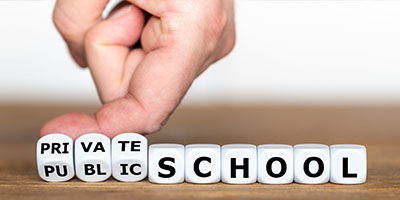
Project Lead
Susanne Wiborg
Team Members
Francis Green
Peter Taylor-Gooby
Andrew Jenkins
Rachel Wilde
Description
The role of private schools in society has long been an object of enquiry. A deep cleavage has developed between state schools and private schools as the latter account for a small minority of pupils yet consumes disproportionate resources. Since its election, the coalition government has generalised the academy programme (liberating state schools from Local Authority [LA] control) and, controversially, allowed groups to form new state-funded “free schools”. The latter, in particular, are thought likely to alter the balance of education provision in an area, and this is our focus of concern. At the same time private schools are having to confront, via Charity Commission guidelines for compliance with the 2006 Charities Act, their obligations to provide a public benefit from which the poor are not excluded. Detailed examination of how these changes are affecting educational opportunities and provision is now timely. We aim to contribute by examining the relationships between private schools, free schools and conventional state schools (LA-controlled and Academies) and how these relationships are changing in eight diverse areas in England.
Theme 3, Project 4 is also connected to ESRC Research Grant ‘Private Schooling in the UK in the 21st Century: Participation and Outcomes’ awarded to Professor Francis Green at UCL Institute of Education.
The role of private schools in society has long been an object of enquiry. A deep cleavage has developed between state schools and private schools as the latter account for a small minority of pupils yet consumes disproportionate resources. Since its election, the coalition government has generalised the academy programme (liberating state schools from Local Authority [LA] control) and, controversially, allowed groups to form new state-funded “free schools”. The latter, in particular, are thought likely to alter the balance of education provision in an area, and this is our focus of concern. At the same time private schools are having to confront, via Charity Commission guidelines for compliance with the 2006 Charities Act, their obligations to provide a public benefit from which the poor are not excluded. Detailed examination of how these changes are affecting educational opportunities and provision is now timely. We aim to contribute by examining the relationships between private schools, free schools and conventional state schools (LA-controlled and Academies) and how these relationships are changing in eight diverse areas in England.
Does diversity of schools lead to innovation or stagnation?
A small literature addresses the role of private schools, in response to the persistent urgency of demands to raise social mobility, but so far no research has been undertaken on the burgeoning free schools, and rather little is known about the nature and extent of the public benefits that private schools in fact provide. This research would seek to contribute to a better understanding of the wider social effects that private and free schools have on the mass of state schools. This project is addressing the questions:
- Do free schools promote competition or cooperation amongst schools?
- Does diversity of schools lead to innovation or stagnation?
- Do free schools overall improve academic standards?
- Do free schools promote social integration?
- The same issues apply to private schools where there is a concern that successful private schools may skim the state system by directing bursaries and other support to the most able students.
We are combining quantitative and qualitative approaches, and also drawing on existing comparative analyses with Sweden and the US. We utilise the National Pupil Database (NPD) to analyse the impact of free schools on local schooling markets, and to explore the type of neighbourhood from which free schools are recruiting pupils. This shows the extent of competition with local state schools. We will examine how they differ from neighbouring state schools to assess whether free schools are exacerbating or reducing local patterns of social stratification. Although existing private schools are not included in NPD, we use the Annual School Census to assess whether any local private schools appear to be losing potential pupils to new free schools. In our eight chosen areas, semi-structured interviews are being carried out with school principals, managers, and local authorities, informed by private schools annual trust reports. We are identifying and assessing the magnitude of, the perceived effects on state schools of the benefits provided by private schools, and of any free schools that have been founded in the area. We also assess impacts on the private schools of their obligation to provide public benefit.
Theme 3, Project 4 is also connected to ESRC Research Grant ‘Private Schooling in the UK in the 21st Century: Participation and Outcomes’ awarded to Professor Francis Green at UCL Institute of Education.
What the project did
From 2014 to 2017 the leader of the free school and private school project, Susanne Wiborg, and other LLAKES researchers have been involved in related studies of the schooling system in Britain, with a focus on free schools in England and Sweden and private schools in England. The most striking new feature in England is the founding of free schools modelled on the Swedish free schools, begun with just a handful in 2011. By the beginning of 2016 there were 75,000 pupils being taught in 379 free schools, and the intention of the government is to continue opening new ones.
Findings and Impact
The first two publications looked at the historical rise of the Free Schools in Sweden and their outcomes in terms of academic attainment and social segregation (Wiborg 2010) and the Free Schools in Sweden and England in a comparative perspective (Wiborg 2015). The former publication has been cited 71 times and led to considerable media attention (The Guardian, the Times, Financial Times, Newsweek, BBC, CNN, etc and several key note speeches:
- Inside Government: Success for Schools: Creating a School fit for the 21st Century. The 6th of July 2010.
- Westminster Forum: Academies and ‘Free Schools’. The 15th of September 2010.
- Inside Government: Future of Schools: Funding Free Schools and the Academies Programme. The 26th of January 2011.
- GovNet: Academies Show: 13th of October 2011
- Graduate School of Education, University of Bristol, 16th of June 2011.
- Society of History of Education, the Institute of Education, the 8th of June 2012.
- All Souls Group at University of Oxford, Templeton College, the 23rd – 24th of June, 2012.
The aim of latter article (Wiborg 2015) was to investigate why Sweden, the epitome of social democracy, has implemented education reforms leading to an extraordinary growth in Free Schools in contrast to liberal England where Free School policy has been met with enormous resistance. Conventional wisdom would predict the contrary, but as a matter of fact Sweden has bypassed England by far in out-sourcing schools to private providers. The comparative argument promulgated in the article is that the combination of three interconnected variables 1) type of political system, 2) party policy changes along the left-right dimension, and 3) the responses of the Left toward market-led reforms of education, are key in explaining this difference in Sweden and England. The article has been cited 23 times.
In another study by Francis Green, Rebecca Allen and Andrew Jenkins (Green et al 2015) it was found that, if anything, free schools were taking in children at primary school level who were significantly above the mean in terms of starting attainments. At secondary level they were situating themselves in areas of somewhat above average in terms of free school meals, a well-known indicator of disadvantage, but admitting children from less-deprived families within these areas. The article has been citied 14 times.
In yet another study by Susanne Wiborg, Peter Taylor-Gooby and Rachel Wilde (Wiborg et al. 2017) they found that more innovation is taking place in regards to management practices than in respect of curriculum and pedagogical practices. Many schools have altered the working and teaching day. Innovation in curriculum and pedagogical practices is very limited. Creating a free school offer that seems to differ from other schools appears to be done through marketing and branding rather than innovation. Parent power, OFSTED, and the relative isolation of free schools appeared to constrain innovation from taking place. The article has been cited twice.
Francis Green, Peter-Taylor Gooby, Rachel Wilde and Susanne Wiborg have also been looking at private schools, which are socially exclusive across the whole of United Kingdom. About 7 percent of English school children attend private schools (though more in the south around London) and around 12 percent do so at some time in their childhoods. In their study (Wilde et al 2016) they looked at how head teachers perceived their public benefit obligations under the current law, as determined by the Charities Act of 2006 and subsequent court rulings. The findings showed that schools interpret public beneficiaries widely to include one or more of state school pupils, local communities, other charities, and general society through raising socially responsible adults. Private schools pursue their own goals through public benefit provision, and balance the advantages of public benefit activities against the costs. The schools are not constrained by the ‘more than tokenistic’ minimum set by the regulator. The findings highlight the difficulties faced by governments who seek to pursue redistributive educational policies through the law.
Susanne Wiborg has been invited to deliver several key notes based on the above research, especially on Sweden.
- nGEO meeting: Cross-national Perspective on Economic Inequality and Educational Opportunities: The Case of Chile, Santiago, Chile, 26th June 2017.
- American Federation for Children National Summit, Washington DC, 2nd May 2018.
- Nordic Education of History conference, Trondheim, 19th September 2018.
- Swedish Research Council, Umeaa, Sweden, the 4th December 2018
Selected Publications
Wiborg, S. (2010) Swedish Free Schools: Do they work? LLAKES research paper 18.
Wiborg, S. (2015) Privatizing Education: Free School policy in Sweden and England, Comparative Education Review, 59, 3, 473-497.
Green, F., R. Allen and A. Jenkins (2015) Are Free Schools Socially Selective? A Quantitative Analysis. British Educational Research Journal, 41, 6, 907-924,
Wilde, J.R., F. Green, P. Taylor-Gooby and S. Wiborg (2016) Private Schools and the Provision of ‘Public Benefit’. Journal of Social Policy, 45,2, 305-323.
Wiborg, S., F. Green, P. Taylor-Gooby and R. J. Wilde (2017) Free Schools in England: ‘Not unlike other schools’? Journal of Social Policy, 47,1, 119-137.







